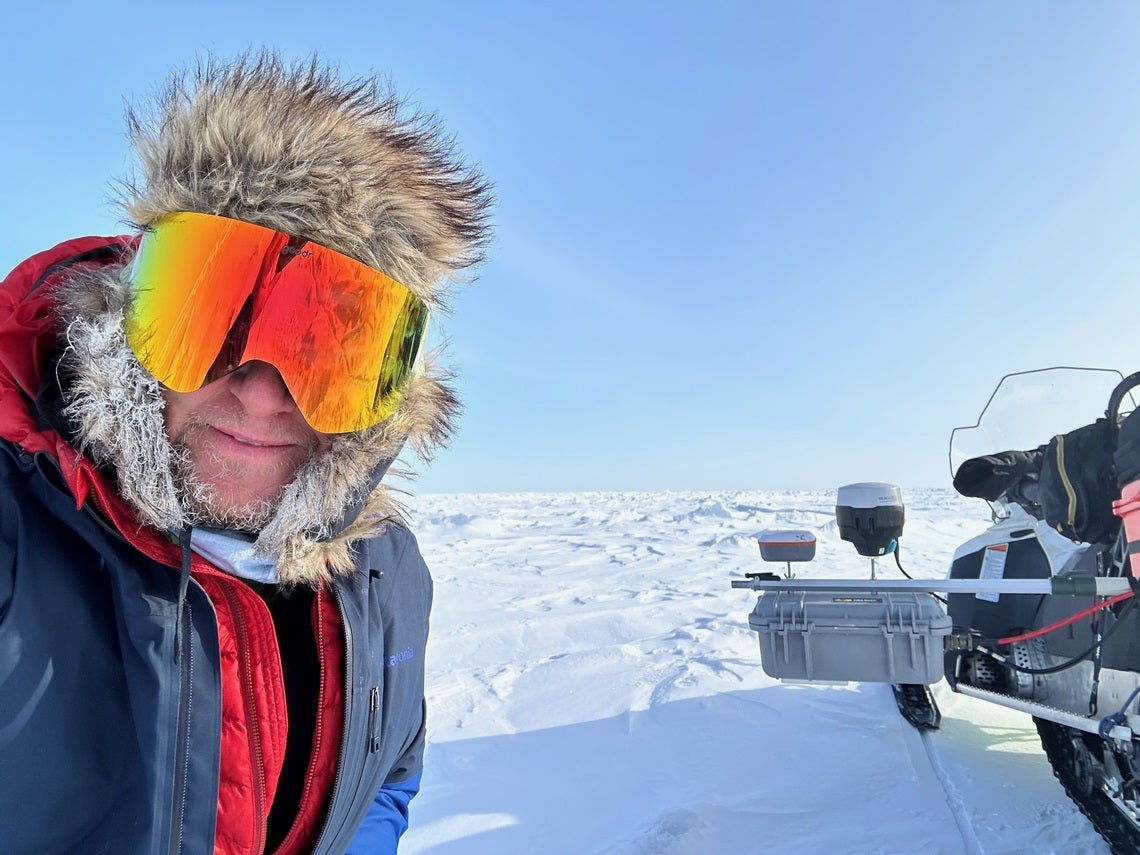
Hans-Peter Marshall, an associate professor in the Department of Geoscience, was recently featured in the Idaho Statesman for his research on Arctic sea ice. He developed a snow-penetrating radar that can measure snow depth – a critical tool for researchers studying climate change’s impact on Earth’s polar sea ice.
Current methods for measuring sea ice depth use satellite-based radar or laser altimetry. Radar can see through the upper layer of snow on sea ice, but laser altimetry cannot.
Previously, scientists using laser altimetry had to estimate snow depth and subtract it from their overall measurement, adding a degree of uncertainty to sea ice measurements. Marshall’s work takes the guesswork out of these assessments, granting researchers a clearer picture.
This radar technology was deployed in collaboration with the University of Alaska Fairbanks on drones in the far north earlier this year, taking measurements across large sections of polar ice. His work will help scientists track climate change across the globe and impact the lives of indigenous communities in the Arctic, for whom ice is part of everyday life.
University of Alaska researchers are measuring the total distance from the top of the snow to the bottom of the sea ice. By combining their total snow and ice thickness measurement with Marshall’s snow depth measurement, the thickness of the sea ice can be accurately observed.